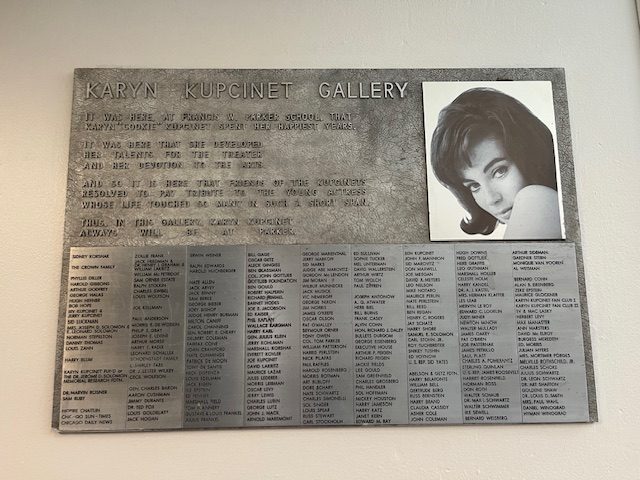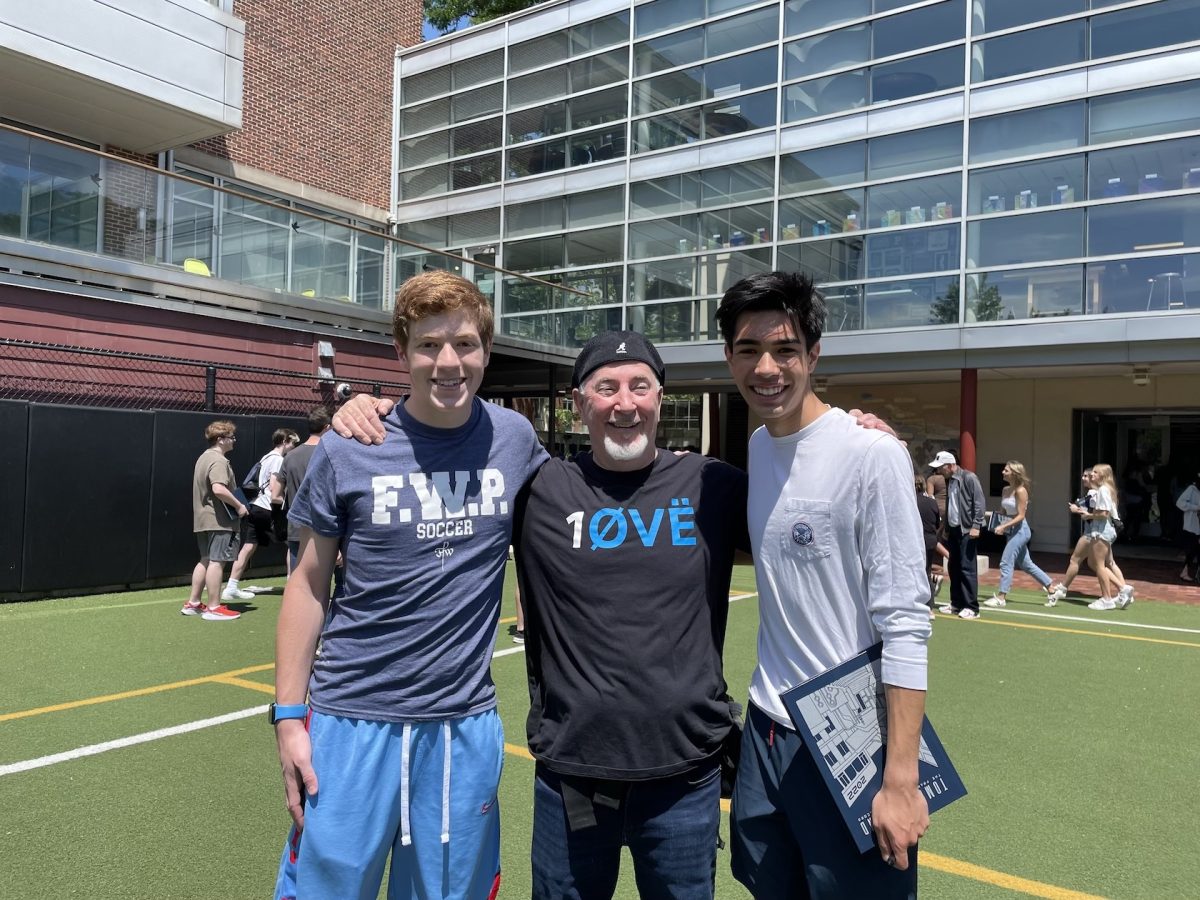In the second floor hallway, across from the auditorium, hangs a stone and metal plaque. In glinting silver lettering it reads “Karyn Kupcinet Gallery,” with a picture of Karyn “Cookie” Kupcinet and nine columns below each filled with the names of the people who wished to commemorate the late Parker alumna. The plaque was hung shortly after her death.
Kupcinet grew up in Chicago, and her career as an actress began in her early teens. As a young student, her intellect afforded her a spot at Parker.
After high school and a semester at Pine Manor College, followed by a move to New York to study at the Actor’s Studio, Kupcinet reached Hollywood in 1961. There, she would be featured in several popular television series and movies, including “The Little Shop of Horrors” (1960), “The Gertrude Berg Show” (1961) and “Hawaiian Eye” (1959). It was not as gratifying as she had hoped. In a diary read by her niece in a documentary titled E! True Hollywood Story: Karyn Kupcinet, she explained how she felt that she had been reduced to the daughter of Irv Kupcinet, an acclaimed Chicago-Sun Times columnist, as opposed to a “nineteen year old girl with talent.”
Her criticism quickly turned inward and she became insecure, focusing heavily on her appearance and weight. Kupcinet’s struggles with self image led to her problematic use of diet pills, an issue that followed her the rest of her life.
As her work towards stardom continued and was beginning to show some yield, Kupcinet became involved with fellow actor Andrew Prine. They first met when she had a guest-star appearance on “The Wide Country”, a television series in which Prine had a leading role. Their relationship was going well until the couple began receiving anonymous death threats crafted out of cut up magazine letters in the mail.
Both Kupcinet’s diary and an account from her friend Marcia Rosh exposed that her infatuation with Prine was so strong she began to stalk him, going so far as to hide out in his house. A page in her diary reads: “I hid in the attic. Then sat outside in the cold for 2 or 3 hours. Wish I were dead.”
It was November 30, Thanksgiving, 1963, when the Goddards, Marcia Rosh’s family, became concerned for Kupcinet’s well-being. The Goddards were Kupcinet’s close friends, and her recent erratic behavior motivated them to check up on her one evening. They knocked on the door of Kupcinet’s West Hollywood apartment, but no one answered. Finding it unlocked, they entered and found a knocked over lamp, a still running television, and a trail of cigarettes leading to an unmoving silhouette on the couch, Kupcinet. When Marcia Goddard couldn’t wake her up, she turned on the light and screamed.
On December 1 the coroner announced the death of Karyn Kupcient via strangulation. When news of the her murder was released, many began tospeculate about who the killer may have been.
Prine was initially one of the primary suspects, but he believed he had the key to finding the true killer. Prine turned over one of the threatening letters he and Kupcient had been receiving to the police in the hopes that authorities could identify who wrote them. By IDing the fingerprints on the back of the tape that was used to attach the magazine letters, the police learned that the person responsible was Kupcinet herself. Prine later claimed in an interview that his shock came “not over what she had done, but of my lack of perception and sensitivity toward her.”
Karyn Kupcinet’s murder is still labeled as open and will likely remain that way, but her memory is forever immortalized at Francis W. Parker.









